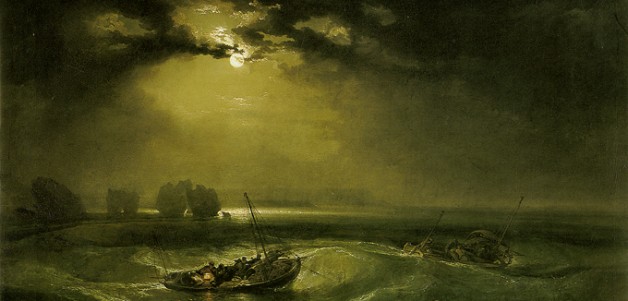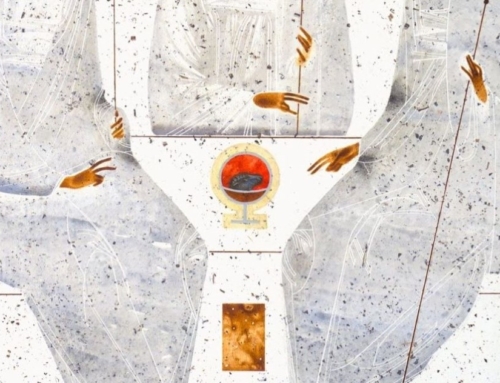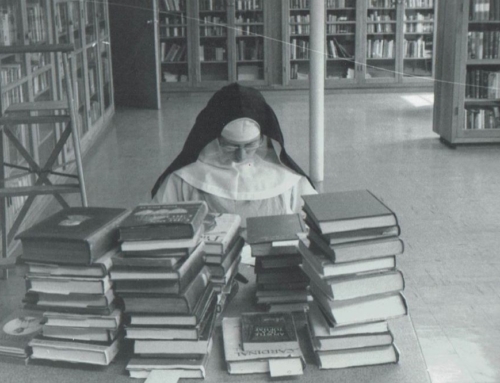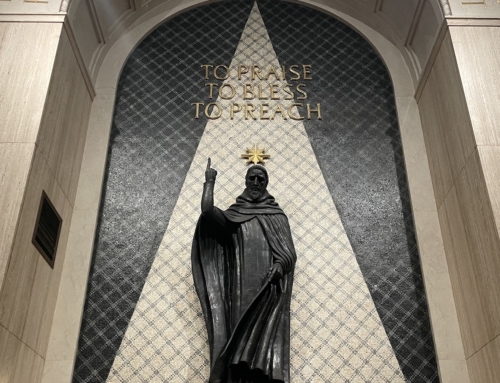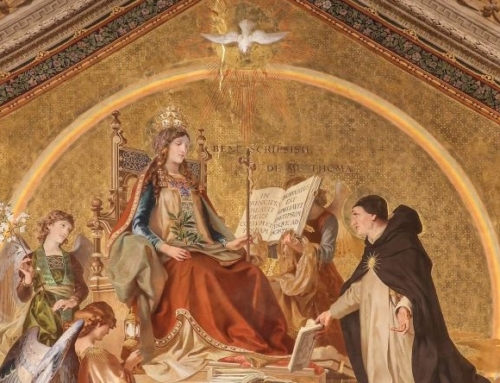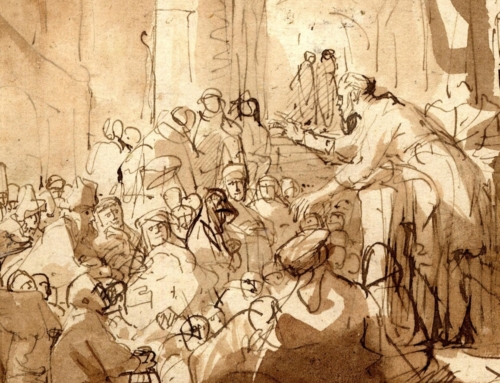In “The Living Flame of Love,” St. John of the Cross speaks for the soul caught up in union with God, in the highest degree of perfection possible in this life. The soul speaks as the bride in the Canticle who no longer feels the absence of her beloved in the wilderness, but finds herself at the peak and fullness of love in this life; and yet despite this fullness, her restlessness can only increase, yearning as it were for the heavenly shores. She is no longer restrained by imperfections and worldly desires that might pull her away from the edge of the world where she now stands – she is held back only by mortality itself; she has been completely consumed by a love that can rest only in the eternity of God.
O Living flame of Love
that tenderly wounds my soul
in its deepest center! Since
now you are not oppressive,
now consummate! If it be your will:
tear through the veil of this sweet encounter!
St. John uses the imagery of lamps, taken from the eighth chapter of the Song of Songs: “Your lamps are lamps of fire and of flames.”
O Lamps of fire!
In whose splendors
The deep caverns of feeling,
Once obscure and blind,
Now give forth, so rarely, so exquisitely,
Both warmth and light to their Beloved.
For St. John, the warming and the giving of light to the beloved represents the light of understanding and the warmth of love imparted by knowledge of the divine attributes, such that knowledge of God as omnipotent enlightens the soul with understanding of God as all-powerful and warms the soul with love; in the same way, knowledge of God as wisdom enlightens the soul with understanding of God as all-wise and inflames the soul in love according to wisdom. St. John speaks of this twofold aspect of the union of the soul with God in terms of water and flame, representing the infusion of the Holy Spirit. John quotes Ezekiel, who says that the Spirit will be poured out upon us. The ‘lamps of fire’ are here understood as both water to satisfy the thirst of the Spirit and flame to move the soul to the act of love, so that it “shines brightly with the warmth of love.” For John, all of this describes the transformation of the soul in God, such that the movements of love in the spirit come to be like a flame and the air it consumes, both burning together.
For John of the Cross, these lamps of fire can come to overshadow a person in two ways. In one sense, a person can be protected or favored by someone else who is close at hand. In the Annunciation, St. John sees an archetype of this divine overshadowing. The angel Gabriel says, “The Holy Spirit will come upon you and the power of the Most High will overshadow you.” For John, it is the closeness of God to the blessed Virgin which makes possible the singular favor and protection implied in the Incarnation.
In another way, St. John speaks of the overshadowing of the Holy Spirit as growth in spiritual perfection, in such a way that a person comes to be like God in his attributes; as when a dark object casts its shadow over another, the second comes to share in the darkness of the first. In the same way a source of light imparts its light to those close to it.
We know that Mary was free from sin from her conception and enjoyed a special closeness to God; we see Gabriel name her ‘full of Grace’ as an acknowledgment of this holiness. In fact, these two overshadowings are only one – for John, divine protection and favor are the results of closeness to God in the Spirit.
When Teresa of Avila meditates on the Song of Songs, she says that the dialogue between God and the bride found there is most perfectly expressed in the Virgin Mary. She quotes the Annunciation, saying that Mary’s humble wisdom is expressed in the fact that, when faced with the news of the Incarnation, she asks only one question: how can this be? Gabriel responds: “The Holy Spirit will come upon you and the power of the Most High will overshadow you.” Teresa says that the mention of two things allayed Mary’s fears: the Holy Spirit, and the Power of the Most High. It was her closeness to God in wisdom – as one overshadowed by a lamp – that enabled her to recognize that the presence of these two things laid all further questioning to rest.
Teresa quotes the Song of Songs: “The King has set charity in order within me.” For Teresa, it is the favor of God and the perfection of grace that has ordered love within the Blessed Mother, such that her love for God is boundless, and her love for neighbor and for sinners is unbelievably strong. As the Queen of Virgins, Mary stands as the archetype of all who betroth themselves to God alone, and as the helper and protector of all who take refuge in her son.
When she appeared at Guadalupe, Mary said to Juan Diego:
Know and take heed, thou, the least of my sons, that I am Holy Mary ever Virgin, Mother of the true God for whom we live, the creator of the world, maker of heaven and earth. I urgently desire that a temple be built to me here, to bear witness to my love, my compassion, my aid and protection.
St. John teaches that those overshadowed by God are made like Him, and Mary, as sinless virgin, is like Him, even to the point of giving Him flesh. In a sense, her motherhood of the Christchild is a kind of reciprocal overshadowing, a special grace granted to her alone, who was chosen to be the bearer of God. For those of us graced with the name Christian, we are humbled to share in this privilege, as the shadow of the one most like Him in grace comes to overshadow us with her maternal care.
At Guadalupe, Mary is revealed as the Woman depicted in Revelation, with the moon under her feet and clothed with the sun. She is radiant in heaven with the light of Grace, with the warmth of Divine love – a love which is powerful, transformative and protective, in the person of Jesus Christ. It is a love that showed its wisdom in a humble fiat – a ‘yes’ that made the desert of Israel bloom, and the Mexican winter ripe with Castilian roses. Mary, Queen of Heaven, pray for us.
Image: JMW Turner, Fishermen at Sea

